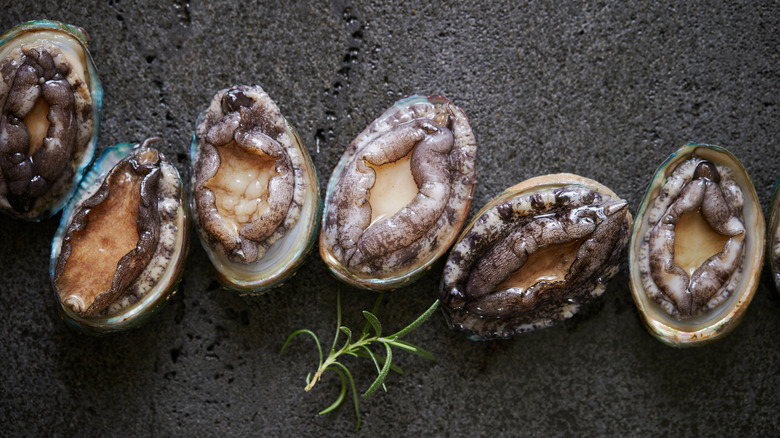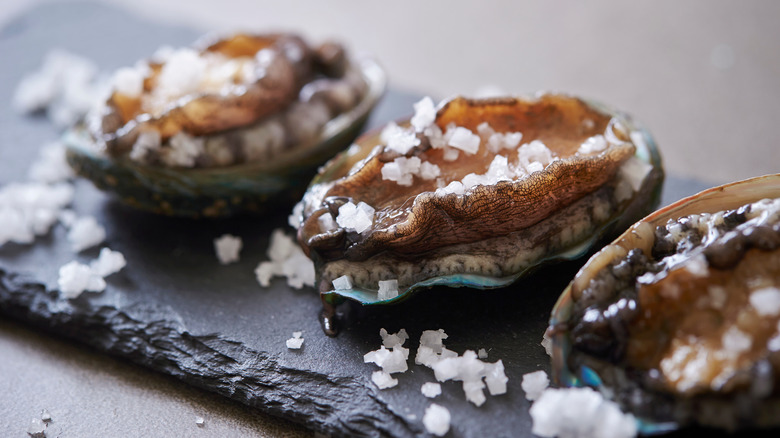The Umami Snail You Should Be Cooking With
Despite an increase in biodiversity loss (per Stanford News), when it comes to seafood, the options are seemingly endless. The oceans are pretty massive, after all. If you can envision any standard seafood dish, you'll likely think of crustaceans such as lobster, crab, and shrimp, or one of the various species of fish. There are also a number of mollusks, which are, scientifically speaking, invertebrates with soft bodies that are often covered by sturdy, protective shells or exoskeletons (per Britannica). Some of the most common mollusks on earth include clams, mussels, scallops, oysters, squids, octopi, and snails. And if you've ever dined at a fancy seafood restaurant, chances are high that you've seen many of these aquatic animals on the menu — and have probably even tasted a few!
Snails are considered a culinary delicacy in many cultures. Escargot, for example, is a popular French hors d'oeuvre that is traditionally served with a buttery, garlicky sauce and white wine. There is another snail species, however, that has been crawling its way into the mainstream.
Abalone is a mollusk famous for its unique flavor
Behold the mighty abalone — a mollusk most commonly found in the waters surrounding Australia, New Zealand, Japan, South Africa, and North America's Pacific coast, according to Treehugger. There are nearly 100 known types of abalone currently living in the world's oceans, but they're still a rare find. And since they are technically an endangered species, they have an extremely high price point and are illegal to harvest in several regions. A single abalone packs quite a punch size-wise, measuring anywhere between four and 10 inches in length.
Most importantly, abalone is treasured for its succulent, tender texture and mega-rich, salty-meets-sweet, pleasantly umami flavor. So, how exactly do you prepare and eat abalone? Fine Dining Lovers recommends frying clean, tenderized abalone in a pan of butter for a few minutes, or breading and sautéing them then finishing with a spritz of lemon juice. The New York Times offers up a recipe for meunière-style abalone, which calls for flour, butter, parsley, lemon juice, and sea salt. You can also use abalone in chowders, soups, and stir-fries. It's a popular sushi ingredient, as well (per The Sushi Geek).

